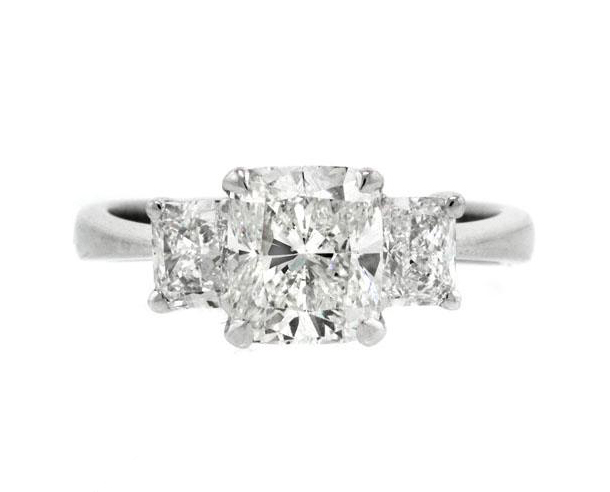What Are The 4 C’s
Learn How Diamonds Are Graded.  Guide to Buying diamonds… for the first time this can seem like a daunting experience but a little bit of knowledge and guidance can help make it far more interesting and enjoyable.
Guide to Buying diamonds… for the first time this can seem like a daunting experience but a little bit of knowledge and guidance can help make it far more interesting and enjoyable.
Firstly and most importantly, you need to familiarise yourself with what is known as the 4C’s of diamond grading and they are colour, clarity, cut and carat.
Essentially, these are the ‘value factors’ of a diamond and between them they determine the price you will pay. Diamonds are unique amongst gemstones for having a standardised grading system that is universally applied. It was established by the Gemmological Institute of America (GIA) in the 1940’s and its continued use helps to ensure a worldwide standard for diamond quality.
COLOUR
These colour grades apply to white diamonds and as such they are referring to the absence or presence of tiny amounts of yellow colouration in the stone. The very rarest and most valuable stones (i.e. the most expensive) have no hint of colour at all and are given the top grade, represented by the letter D. The scale then moves down through the rest of the alphabet, each letter indicating a slight increase in the amount of colour present, as is illustrated in the chart. It is worth remembering that the difference between each grade and those directly above and below it is visually very subtle, the difference in price however will be more obvious, particularly in larger stones!

CLARITY
The term clarity refers to the internal inclusions and external blemishes of a diamond that are visible under 10x magnification with a jeweller’s loupe or microscope. An inclusion is any small feature such as a crystal or tiny fracture seen within the stone whereas external marks will include chips and polishing lines. The more of these features a diamond has and the easier they are to see, the lower it will rank on the scale. Appropriately enough, those with no discernible inclusions or blemishes are termed Flawless and from there the grades move down the scale all the way through to those stones with obvious markings which are graded Included. Typically, it is only in stones with this lowest grade that you will be able to see inclusions with the naked eye. Clarity grades are referred to using abbreviations, so for example a ‘very very slightly included’ stone will be described as a VVS stone. You will see in the chart above that each of the grades is divided into two or three numbers, in each case the higher number is the higher grade, so a VS1 grade has a better clarity than a VS2 and so on.
CARAT
This is the easy one as it simply refers to the weight of a diamond. Gemstone weights are measured in carats (often abbreviated to cts when written) and 1 carat is equal to 0.2 grams which is approximately the same as a regular paperclip. Each carat is divided into 100 points, so a diamond weighing 1 and ¾ carats would be described as 1.75cts and a 0.50ct diamond is ½ a carat. The greater the carat weight the higher the price (all other factors being equal) but the price doesn’t rise evenly. For example, a 2ct stone will cost significantly more than twice that of a 1ct stone if they are of the same quality, this is due to desirability and consumer demand. Whole and half carat weights see the most significant price jumps.
SHAPES
This refers to the online of the diamond the overall shape the most popular listed below.
CUT
This does not refer to the shape of a diamond (e.g. round, square, cushion) but rather to the quality of the cut and finish of a stone and is assessed by looking at three things – the proportions, the symmetry and the polish. Whilst grading these particular features is quite technical, appreciating the overall effect they produce is not. Simply put, a poorly cut stone will not look as sparkly as a well cut one. As you can see in the chart, the grades are very straightforward and rank from Excellent to Poor. Arguably it is this characteristic more than any of the others that influences the overall beauty of a diamond as it determines the brilliance, liveliness and sparkle seen in the stone. And what is a diamond without sparkle?!



